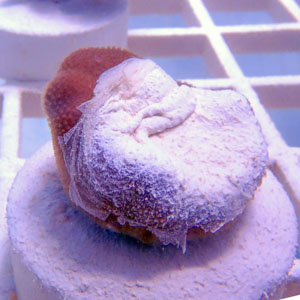
Global S&T Development Trend Analysis Platform of Resources and Environment
| Sneezing corals: Mucous sheets and sediment exposure | |
| admin | |
| 2017-03-07 | |
| 发布年 | 2017 |
| 语种 | 英语 |
| 国家 | 澳大利亚 |
| 领域 | 资源环境 |
| 正文(英文) |
Scientists from the Western Australia Marine Science Institute (WAMSI) have discovered a new bioindicator to assist with monitoring sediment-related stress in corals - mucus. Field observations and laboratory tests have shown a strong relationship between the increased prevalence of mucus – or coral snot – produced by boulder corals when exposed to high sediment levels near dredging activity. “Science has long known that boulder corals produce mucus sheets, but it was unclear what triggered them,” said PhD candidate Pia Bessell-Browne. “Our study shows strong evidence that these boulder corals produce mucous sheets when exposed to high sediment levels.” The response might sound rather unappealing; however it appears to have a very important self-cleaning function. “It’s one way the boulder corals can prevent being smothered and killed by the sediment,” explained Dr Ross Jones, AIMS Senior Research Scientist and WAMSI Dredging Science node leader. “The coral produces the mucous sheet, trapping the sediment. The coral then sloughs, or rejects this sediment-laden, gooey sheet, exposing the clean, sediment-free colony underneath.” “We can liken it to a human sneeze – it’s the coral’s way of using mucus to remove foreign matter,” explained Ms Bessell-Browne.
Over 400 boulder corals were monitored at varying distances from dredging activity for over 18 months. The team observed that corals close to the activity (and therefore exposed to more sediment) were far more likely to produce mucous sheets than corals further away from the dredging. Many corals close to the dredging also produced multiple sheets during the study period, but none showed any mortality. These observations were then tested in the National Sea Simulator, where coral fragments were exposed to varying amounts of sediment under tightly controlled conditions. These experiments confirmed the field observations – that corals exposed to higher sediment loads produced more mucous sheets (see image above). This evidence showing the close association between mucus and sediment means the presence of mucus can be used as a bioindicator in reef monitoring. “These coral mucous sheets are easy to see by both cameras and divers, and could provide reef monitors with a quick indicator of areas where sediment levels are beginning to irritate the corals,” said Dr Jones. AIMS works with industry and regulators to fill the gaps in knowledge related to dredging and is a key contributor to the Western Australia Marine Science Institution (WAMSI) Dredging Science Node. This research was published recently in the paper “Mucous sheet production in Porites: an effective bioindicator of sediment related pressures” in Ecological Indicators and is available online. |
| URL | 查看原文 |
| 来源平台 | Australian Institute of Marine Science |
| 文献类型 | 新闻 |
| 条目标识符 | http://119.78.100.173/C666/handle/2XK7JSWQ/233031 |
| 专题 | 资源环境科学 |
| 推荐引用方式 GB/T 7714 | admin. Sneezing corals: Mucous sheets and sediment exposure. 2017. |
| 条目包含的文件 | 条目无相关文件。 | |||||
| 个性服务 |
| 推荐该条目 |
| 保存到收藏夹 |
| 查看访问统计 |
| 导出为Endnote文件 |
| 谷歌学术 |
| 谷歌学术中相似的文章 |
| [admin]的文章 |
| 百度学术 |
| 百度学术中相似的文章 |
| [admin]的文章 |
| 必应学术 |
| 必应学术中相似的文章 |
| [admin]的文章 |
| 相关权益政策 |
| 暂无数据 |
| 收藏/分享 |
除非特别说明,本系统中所有内容都受版权保护,并保留所有权利。
修改评论